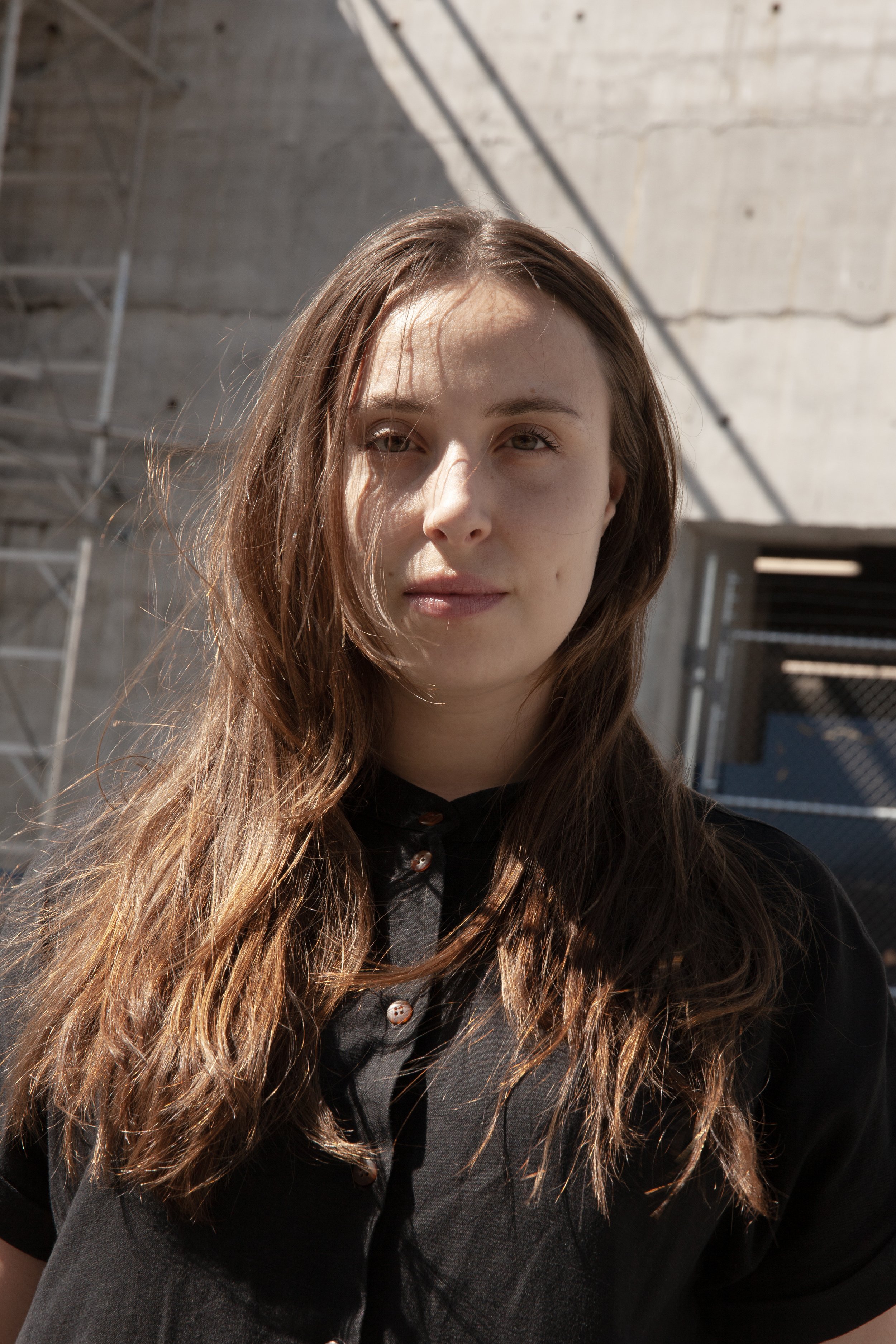Andrew Jackson,
Sophia Borowska
Michael. P. Farkas, CEDA, Rue Delisle, 2024
Andrew Jackson
Digital C-Type Photographic Print, 50.8 x 50.8 cm.
RENOVATION NOT/PAS EVICTION, 2025
Sophia Borowska
Handwoven linen, wool, and tencel, 91.4 x 60.9 cm. Photo credit: Noah L'abbée.
Mapping Erasure, Weaving Memory
Andrew Jackson and Sophia Borowska merge their practices to reveal what the city forgets. Their works, at the crossroads of documentary photography and textile installation, form a powerful alliance between image and material, rooted in gestures of resistance, listening, and memory. Together, they explore the traces left by dispossession, gentrification, and the erasure of communities from Montréal’s urban fabric.
In Michael P. Farkas, CEDA, Rue Delisle (2024), Andrew Jackson turns his lens toward the emblematic figure of Little Burgundy. Through sculptural lighting that cuts across the interior of a community centre, he captures a suspended moment: a seated man, grounded, bearing collective memory, gazing off-frame as if toward a future yet to be written. This photograph becomes both a living archive and a tool for transmission. Jackson, himself shaped by a diasporic trajectory, composes a silent yet charged portrait set in a site historically marked by the expropriations tied to the construction of the Ville-Marie expressway.
In counterpoint, Sophia Borowska presents RENOVATION NOT/PAS EVICTION (2025), a handwoven textile work composed of linen, wool, and tencel, mapping recent activist struggles in Milton-Parc. Across the vibrant surface, the words “RENOVATION NOT EVICTION” are densely looped and embroidered in red, orange, green, and blue, an adamant, insistent cry of resistance. The pattern, evoking a fragmented urban plan, highlights the tension between speculative development and sites of grassroots resistance. Through her material and chromatic choices, Sophia offers a counter-aesthetic to violent urbanism: one of solidarity, where weaving becomes a political gesture.
Though formally distinct, both of their approaches are rooted in territory and memory. Together, they raise an essential question: to whom does the city belong? And more specifically, who is made visible or erased? These two works draw a poetic cartography of absence, a layered attempt to re-inscribe plural histories within the urban space. They invite us to perceive walls, streets, and voids differently; to read the city as a palimpsest in which each layer conceals a memory.
In the context of Mémoire de l’avenir 2025, the Borowska-Jackson duo offers a sensitive and political diptych that challenges our ways of inhabiting. Through light and fibre, shadow and motif, they remind us that inhabiting is not merely occupying space, it is inscribing a voice, a story, a care. Their works offer a counter-narrative to the dominant urban fabric, an invitation to dwell otherwise: attentively, memorably, and justly.
Text by the AUM team
Andrew Jackson - BIOGRAPHY
(he)
Andrew Jackson’s photographic and moving image practice critically examines how memory becomes inscribed within physical space, particularly in landscapes marked by trauma, displacement, and racialised spatial control. Adopting a post-documentary approach, he navigates the tensions between visibility and erasure, positioning the image not as a vehicle for resolution but as a generative site of critical inquiry. His work interrogates how landscapes can simultaneously reveal and obscure the histories they contain.
In Little Burgundy (2025), commissioned by the McCord Stewart Museum in Montreal, Jackson explores the cultural and spatial erasure of a historically Black neighbourhood undergoing accelerated urban redevelopment. By juxtaposing the material conditions of the built environment with its conceptual and affective renderings, the project interrogates the paradoxes of “Black Space”—as a site of cultural refuge and continuity within Black memory, and as a locus of marginality, disorder, or absence in dominant narratives.
Jackson’s work is held in public and private collections, including the UK Government Art Collection. His current research extends across Accra, Quebec, and Vermont, tracing a submerged Black cartography shaped by displacement, globalisation, and environmental transformation.
Sophia Borowska - BIOGRAPHY
(she)
Sophia Borowska is an artist and weaver based in Tiohtià:ke/Mooniyang/Montréal. She creates site-specific installations combining textiles with salvaged construction materials like concrete, brick, and steel. Researching architectural case studies, Sophia advocates for housing justice, and tells the untold stories of women's and marginalized communities' contributions to urban spaces. She translates these alternative perspectives through laborious, feminine-coded textile processes. Weaving, with its two sets of perpendicular and intersecting threads, is uniquely suited to communicating complex, ambivalent positions.
Her current body of work examines the struggle between housing justice and architectural megalomania in Montréal's Milton-Park neighbourhood in the 1970s.
Sophia holds a BFA in Fibres and Material Practices from Concordia University (2016), and has exhibited across Canada and internationally since 2012. Favouring artist residencies as a means to engage with local case studies, she has been a resident at Kunstkollektivet 8B (DK), La Maison des métiers d’art de Québec (CA), The FASF Tapiola Guest Studio (FI), GlogauAIR (DE), and Lademoen Kunsterverksteder (NO).


